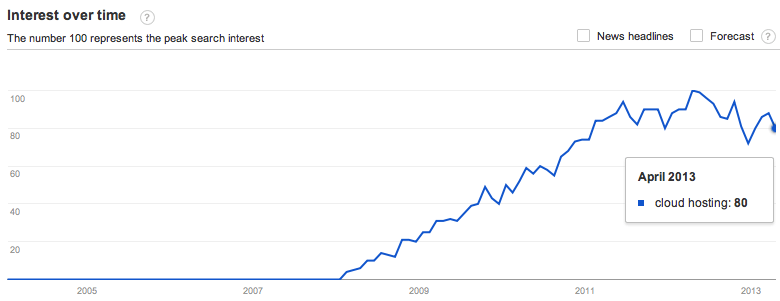What is a cloud hosting and do your sites need to be in the “cloud”?
To answer this question lets dig a little into history. Virtualization technology is actually not new. You can even say it’s as ancient as computers and servers themselves. Couple decades ago IBM has already been working with virtual servers and called them “Containers”. In the mid-2000s the mainstream CPUs became powerful enough so that every home computer could run virtual machines.
Virtualization software started to improve rapidly and virtual server hosting became available to everyone. Customers loved Virtual Servers because it was a more economical alternative to Dedicated Servers. Performance of Virtual Servers grew and technology has been improving with new hypervisors and hardware acceleration instructions.
Then large IT companies felt the market was fulfilled with Virtual Server solutions at the time when most hosting companies just started offering Virtual Servers. So new marketing trick was invented. At the beginning of 2008 Virtual Servers were renamed into the “Cloud” (see Google Trends graph below). Many people are still confused about the term “Cloud”. The Cloud is basically a farm of virtual servers. Before Virtual Servers the computing farms used to be called Clusters.
Now it’s called by new marketing term Cloud. Other than changing the term, large IT companies also realized that utility billing is more confusing to people so they put out prices billed by an hour. Keep in mind that most customers don’t turn off servers for the night to save Computing Power Meter. Imagine your website or application would be available online only during business hours! This utility scheme of billing might be beneficial to some developers, but most of them create applications on local machines anyway. There is really no point starting a remote Virtual Server for couple hours just to see if the site is working. Most developers buy a Virtual Server for 100% uptime and not for a few hours a day anyway. One reasonable scenario for hourly billing is for customers who require rapid increase and decrease in computation power such as universities, science projects, financial computations during peak hours, etc.
Internet business did not stop there. Companies started naming every service they have on the Internet as the Cloud. So phrases like “upload files into the Cloud” are now common. Just couple years ago a Cloud was a technology based on Virtual Servers (Clusters of servers), nowadays a Cloud is just a new word for the Internet. Try replacing any phrase you hear about the Cloud with the word Internet and everything will make better sense.
At ASPnix we do monitor all trends and customer demands and at one time we even tried using “Cloud Server” name for a few weeks but reverted back to Virtual Servers because that’s what it really is. We want to offer real products to our customers using real names rather than confuse and trick them into buying something “cool” that everyone uses.










Nice post, Thank you very much to clear the concept between cloud and virtual server.
No problem!